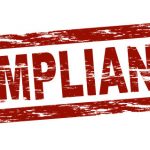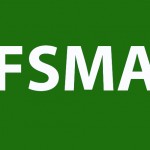In September 2015, the FSMA Preventive Controls for Human Food Rule was published, requiring affected companies to comply with all FDA timelines. The last of these deadlines required that all very small businesses (less than $1 million per year) be in compliance with the FSMA rule by September 17, 2018.
With most companies having implemented FSMA preventive controls at this point, what have we learned? What’s still not clear? What major challenges remain? This article shares some questions that could help more companies on their journey to FSMA compliance.
What Is the Preventive Controls (PC) for Human Food Rule?
In plain language, under FSMA’s preventive controls for human food, FDA asks companies to identify any known and foreseeable potential hazards to finished products, and then apply control measures to prevent those hazards from happening and to ensure companies produce safe products. This rule changes the mentality from reactive to proactive.
Let’s break the term preventive control apart:
- What are we preventing? We are preventing any potential hazards that could occur. FDA identified four major categories of hazards. Food companies must look at their production processes and identify any foreseeable hazards within these categories:
- Physical
- Chemical
- Biological
- Intentional adulteration for economic gain
- What are we controlling? We are controlling the risks from all those hazards identified. Control measures should be identified for each risk from a particular hazard identified so they can be effectively applied.
Melody Ge will close out the 2018 Food Safety Consortium with the Plenary Session, “What Have We Learned After FSMA Implementation?” | November 15Where Do We Start?
A logical starting point involves understanding all hazards at your production facility. How can you ensure all hazards are assessed and evaluated? Consider mapping out the process line as one effective way. It is important to thoroughly understand your processes, as well as all raw materials, equipment, and personnel associated with each processing step. The more details gathered at the beginning, the easier it is to understand the hazards and risks as a foundation. A hazard can always be eliminated later if it is not applicable nor likely to occur.
Are All Control Measure or PRPs Considered Preventive Controls?
The short answer is not necessarily. Only those associated with a potential hazard will be considered a preventive control. For example, for an approved supplier program controlling incoming goods and suppliers, if an allergen is identified as a potential foreseeable hazard, the approved supplier program at the receiving step will be identified as a preventive control. Once a preventive control is determined, it must be evaluated to ensure it is proper and applicable to control and minimize the risks (117.420).
The same mentality should be applied for other control measures. Is there is a hazard and, if so, can this control measure actually control the risk? Once preventive controls are determined and identified, monitoring and validation are the next steps to ensure preventive controls are functioning effectively to control the risks as expected. If not, proper corrective actions should be identified.
Are Corrective Actions Always Required?
Not always—it depends! It is important to remember the intent of FSMA’s preventive controls, which is to prevent any potential hazards and control the risks to ensure safe products are produced. Per 117. 150, corrective action is a must when:
- There is a potential pathogen threat in RTE products
- There is a potential pathogen threat from the environmental monitoring program
- A preventive control is not properly implemented and a corrective action procedure has not been established
- A preventive control(s) or the food safety plan as a whole is not effective
- Records are not completed after review
Other than the above-mentioned, corrections can be applied to address minor and isolated problems in a timely manner. As with all other food safety management systems (FSMS), once a corrective action is determined and implemented, a verification of its effectiveness shall be conducted. In addition, everything should be documented, as records are a vital component of the preventive control rule.
The FSMA Preventive Controls Rule is not scary. It is simply a series of requirements to assist the industry in proactively identifying the best control measure for operations. Foreseeable hazards must be controlled. As with all other management systems, knowledgeable and experienced personnel can help develop a valid food safety plan, including preventive controls, and ensure it is effectively implemented and maintained onsite.






